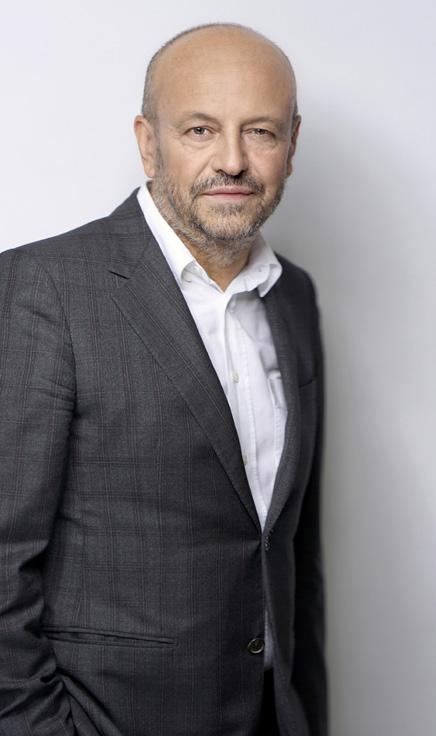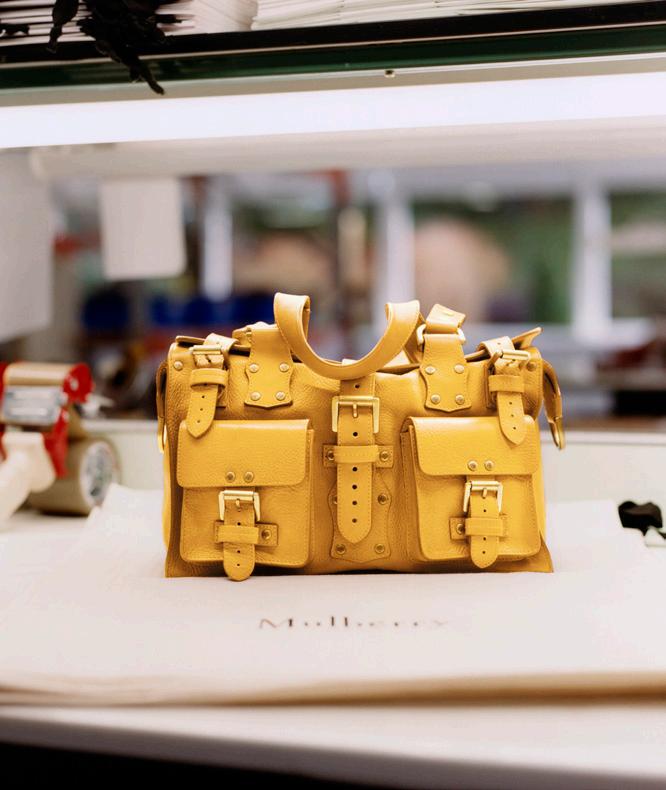
3 minute read
Sustainability in its DNA
According to The World Resources Institute, roughly 40% of the annual loss of primary rainforest is associated with commodity production including clearing forest to raise cattle. “Deforestation is among the largest sources of global greenhouse gas emissions,” it says.
So, how does a British Luxury Lifestyle brand, whose core offering is luxury leather goods, ensure that it’s sustainable? Well, Mulberry believes it’s in the “how”, not the “cow”.
The iconic brand behind Le Style Anglais has always been one step ahead of the sustainability game. In fact, Mulberry UK’s operations have been a carbon neutral business since 2019.
Mulberry’s sustainable measures span its whole business, from the practices it implements in-house, to its carefully sourced supply chain and its after sales services for customers.
Zero Waste
Dating back to 1971, Mulberry is the biggest leather goods manufacturer in the UK, with its most recent annual report revealing a group revenue for year ending April 2022 of £152.4 million.
“We are a truly modern, truly global company. But through our heritage, our craftspeople, our inspirations and our designs, Mulberry’s soul will always be British” states Mulberry in its annual report.
MULBERRY PROJECT
DIRECTED
BY:
CHARLOTTE BILLIG
ARTICLE
WRITTEN BY: LAURA WATLING
Established in Somerset as a family business, over 50% of Mulberry’s products are produced in its two Somerset factories, The Rookery and The Willows. The Rookery is home to Mulberry’s Lifetime Service Centre.
“Sustainability is in our DNA,” shared Mulberry CEO Thierry Andretta, when speaking exclusively to Business Enquirer, “our products are designed to last, but our talented team renew and repair over 10,000 bags a year for our customers. It’s something to be truly proud of”.
Mulberry was one of the first luxury lifestyle brands to launch its own circular economy programme, The Mulberry Exchange.
The Mulberry Exchange first appeared in stores in 2020, extending to mulberry.com and Vestiaire Collective in April 2021.

The programme invites customers to have their Mulberry bags authenticated and expertly restored. Customers then have theopportunitytotradeintheirexisting bagforcredittowardseitheranew purchaseorapre-lovedstyle.
TheMulberryExchangeensuresthat everyMulberrybaghastheopportunity tolivemanylivesandbeenjoyedbymany owners.Inthepastyear,theMulberry Exchangehasgone fromstrengthto strengthandenablesMulberrytopioneer circularityglobally.
InApril2022,Mulberrylaunchedthe MulberryExchangeonitsUSwebsite, and inJune2022thebusinessannouncedthe launchofMulberry’sDigitalIDs,powered byEON.ThiswillprovideMulberry Exchangecustomerswithvaluable informationaboutthelifecycleoftheir pre-lovedbag.
“Theseinitiativeshavebecome cornerstonesofMulberry’sbusiness.It isfurtherproofofourcustomer’sloveof Mulberryiconspastandpresentandtheir trustinthelongevityofthebrandandour product,”Thierryshared.
Mulberryplanstocontinueextendingthe MulberryExchangetoitsglobalomnichannelinthemonthsahead.
AspartofMulberry’scommitment toachievenetzeroGreenhouseGas (GHG)emissionsby2035,thebusinessis implementingsustainabilityinitiatives acrosseveryelementofitsbusiness.
Fromaproductionperspective,this includescombiningtheuseofgreen energywiththebesttechnologyto ensure consumptionislimited.
Thebusinesskeepswastetoaminimum, implementingmanufacturingtechniques toensureminimalleatheroffcutsare produced.Anyleatherwastethatis createdisdonatedtolocalschools, universitiesandcraftgroupsandscrap stores.
Mulberry’sSomersetfactoriesalsowork withZeroWastetoLandfillproviders, recoveringenergyfromwastewhich cannotbereusedorrecycled.Anynonrecyclablewastewhichwouldtraditionally go to landfill is instead processed at an Energy Recovery Facility, creating electricity for the National Grid.
Responsible Leather
Mulberry’s collections are 90% leather goods, and so it is crucial to the business that it uses the material in the most sustainably responsible way.
“100% of the leather sourced in our collections from this season onwards are from environmentally accredited tanneries,” shared Thierry, “traceability is important to us, so we know that 97% of our suppliers monitor their energy consumption whilst 62% of them are using green energy”.
In addition, all the leather used in its collections (from this season onwards) is carbon neutral, which is achieved through offsetting with charity World Land Trust.
In May 2022 Mulberry launched the Carbon Neutral Lily. The collection included 12 carbon neutral designs, crafted from carbon neutral leather and made in Mulberry’s carbon neutral Somerset factories. Components, transport and packaging were all additionally offset via the World Land Trust.
Within its offering, there is space for nonleather goods, and attention has been paid here, too, to ensure sustainable and innovative materials are used.
This includes the replacement of virgin nylon with ECONYL® , which is made from nylon waste, and the use of bio-acetate in Mulberry’s sunglasses range.
“We’ve also set the goal of using only sustainably sourced cotton in our collections by 2025. As signatories of Textile Exchange’s Sustainable Cotton Challenge, we pledge to source this cotton through organic and recycled sources, or through our Better Cotton membership, the largest cotton sustainability programme in the world, which aims to improve cotton farming globally,” explained Thierry. International Growth
“Our sustainable collections build upon our Made to Last goals and represent the future of Mulberry,” said Thierry, “but we are also looking to other initiatives and innovations to optimise our brand”. Mulberry already has a well designed omni-channel presence, including 120 owned and partner stores across 25 countries, as well as a website which contributes to 31% of its revenue. However, the future for Mulberry will include considering how to utilise new platforms such as the metaverse and the NFT space.

“This is a challenging step for most businesses, but we will be looking at how we can integrate our sustainability goals within these new spaces,” explained Thierry.
Despite being present worldwide (with its website shipping to over 190 countries), 60% of Mulberry’s business is in the UK, a rarity, according to Thierry.
“Mulberryisunique,Iknowofnoother luxurybrandwithmorethan20-25% ofbusinessinitsowncountry,”hesaid, “internationalisationwillformapartofour strategywithinthecomingyears”. Partofthisstrategywilllooktofurther improveMulberry’somni-channelandthe customerexperience,creatingacohesive flowbetweenthedigitaland‘bricksand mortar’experiences.
The Human Touch
Despitethedemandsofdigitisation andautomationinthefutureof manufacturing,Thierrybelievesthat peoplewillalwaysbeatthecoreofthe business,andteamworkisafactorinits success.
Havingspentthelast30yearsleading luxurybrandstosuccess(including McQueen,Balenciaga,Celineand Armani),ThierrycametoMulberryasan independentmemberoftheboardin 2014.
“WhatIloveaboutMulberryisithasa fantasticstoryandloyalcustomers.When IjoinedasCEOin2015Ifeltthatitneeded moredirection,”sharedThierry,“so,Iaim tobringtothetableaclearstrategyand direction”.
Asaleader,Thierrybelievesitisimportant to“testandtry”andbehumblein mistakes.
“Therecanberesistancetochange,but wewon’tknowwhatworksuntilwetryit,” hesaid.
“Mulberryis52yearsoldthisyear,butthe journeyisnotdone.Inthenearfuture wewillbelookingtoinvestfurtherinto ourfactoriesandourpeopletoenable ouradvancementinsustainabilityand internationalisation,”Thierryconcluded.
www.mulberry.com


